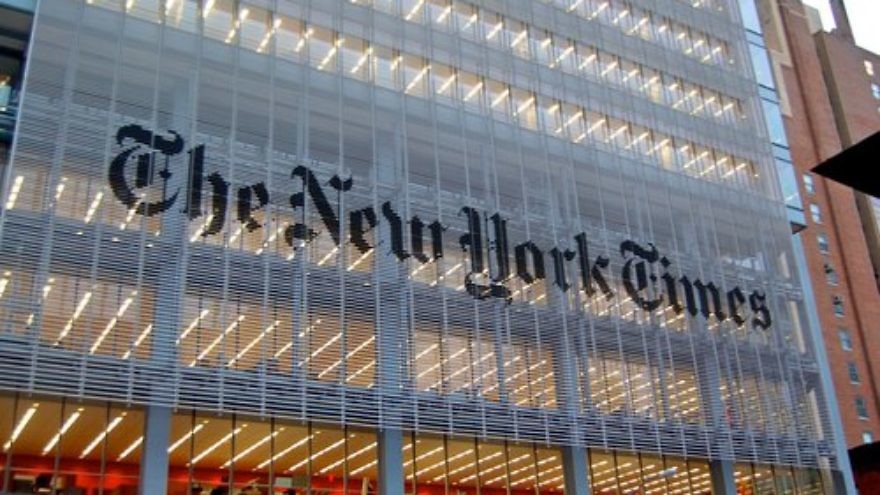A single word jumped out at me from this headline in Saturday’s New York Times: “A D.J.’s Set Outside a Mosque Spurs a Debate on Palestine’s Cultural Identity.”
Guess which word. As Robert Preston in The Music Man might literally spell out, ”Ya got trouble, right here in New York City! With a capital “T” and that rhymes with “P” and that stands for PALESTINE!”
Editors at The New York Times would be correct, technically, if they argued that there is a Palestine – two of them. We have Palestine, Illinois, population 1,360, and Palestine, Texas, population 18,000. The closest mosque I could find near the Texas Palestine is 70 miles away in Lufkin. The Lufkin in Texas, that is.
The Times story focuses on a mythical “Palestine” more than 6,000 miles east of our Palestines in the region comprising Israel and Jordan. Israel was once known as Palestine before the United Nations voted for creation of the state of Israel, effective in 1948.
However, there has never been a sovereign state called Palestine. There may well become such a nation that includes Israel’s territories in the West Bank and Gaza. Many of us hope there will be a sovereign state called Palestine or whatever name its people want to attach to it. But not yet.
It is impossible to conduct a civil debate with many pro-Palestinian activists because they automatically assert the struggle for “Palestine.” They also revise history, exaggerate Israeli missteps and outright lie. How can we take seriously anyone who would make up their own facts? That is what they do, and I feel offended when they fabricate information.
With the Times’ prominence in the journalistic arena, its headline affords a stamp of legitimacy on a place that does not exist. Reporter Patrick Kingsley applies the word as if it is fact when he calls the main subject of his article, Sama’ Abdulhadi, as “this pride of Palestine.”
The article reported on how religious Palestinians last December disrupted Abdulhadi’s video project of an electronic music performance at a cultural complex attached to a mosque near Jerusalem. Though her intent was to express Palestinian identity, the religious Palestinians viewed the project as an assault on Islam.
The Times’ headline is preceded by many years in which advocates for the Palestinians repeatedly refer to Palestine when discussing the Middle East. This word has become so common that it is now politically incorrect to deny the existence of Palestine.
Nearly two years ago, New York City Councilman Kalman Yeger, a Brooklyn Democrat, was ousted from City Council’s immigration committee after he tweeted, “Palestine does not exist.”
Politico reported that council’s leadership team kicked him off the committee in a closed-door meeting.
Yeger’s comments, said Council Speaker Corey Johnson, “were dehumanizing to Palestinians, and have no place in New York City.” The committee “is supposed to welcome and support immigrants in our city. What he said is totally inappropriate and sends the wrong message about our values.”
What values does he mean? Denying reality? Accepting distortions?
As for welcoming immigrants, what does that have to do with Yeger’s remarks? If he wants to talk about immigrants, Israelis and other Jews have emigrated to America in large numbers. How do they feel?
The Times headline is yet another step in the wrong direction. Conservatives have slammed the Times for complying with a liberal orthodoxy. I have been defensive of the Times in the past. I cannot defend a headline that fabricates a falsehood. The Palestinian propaganda machine could not have written a more slanted headline.
Republished from San Diego Jewish World


























